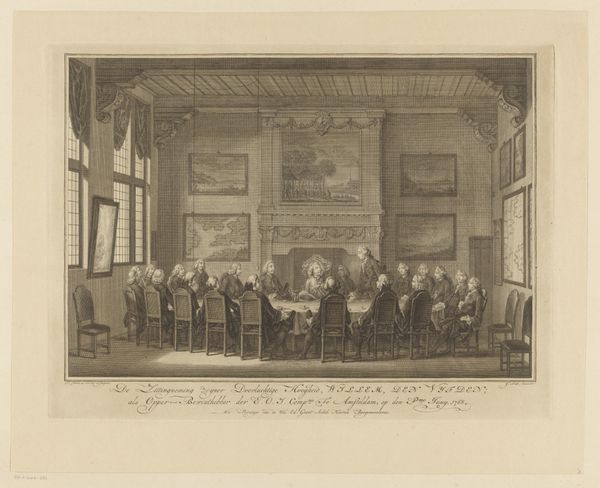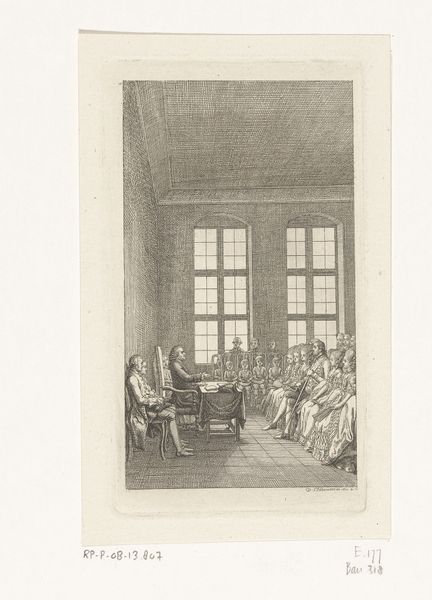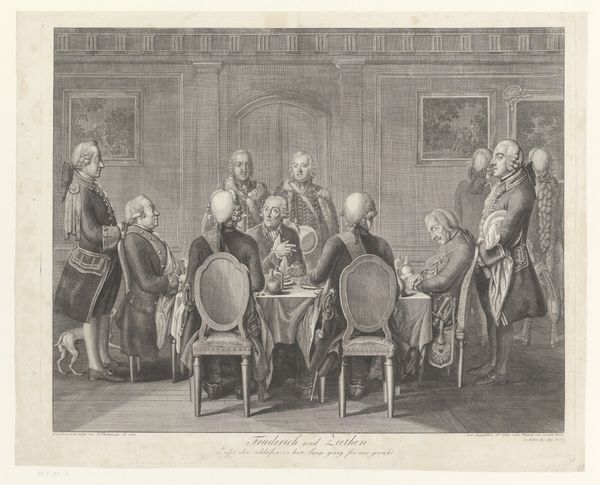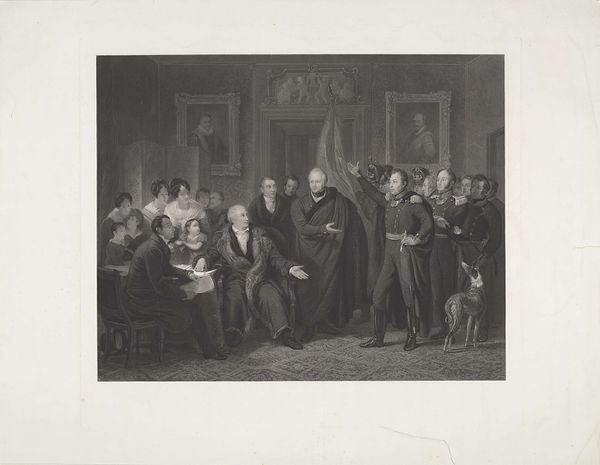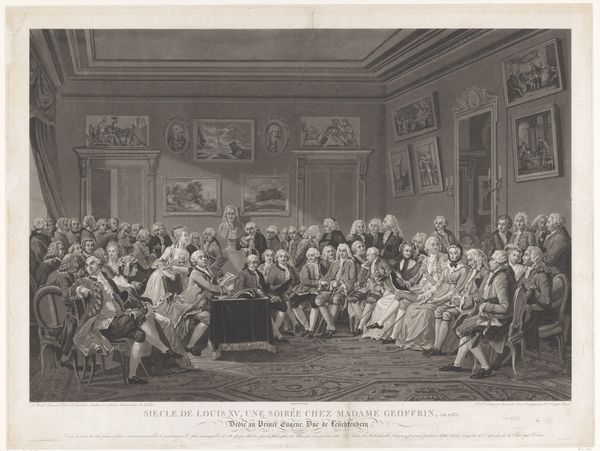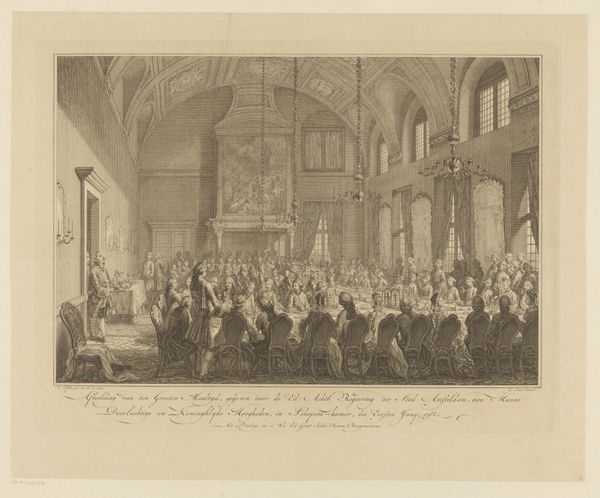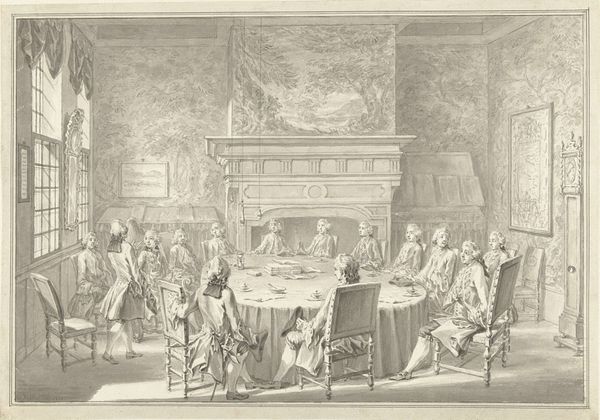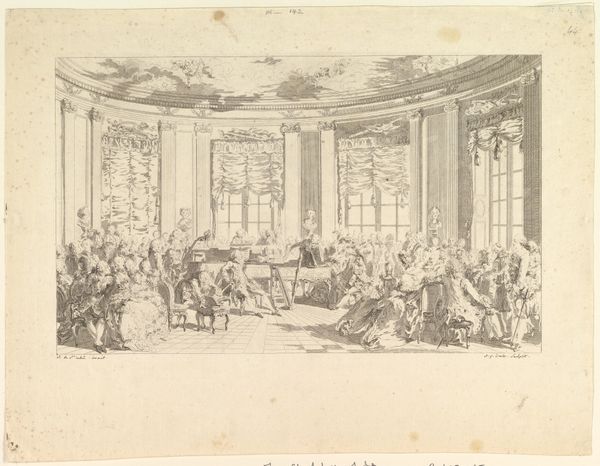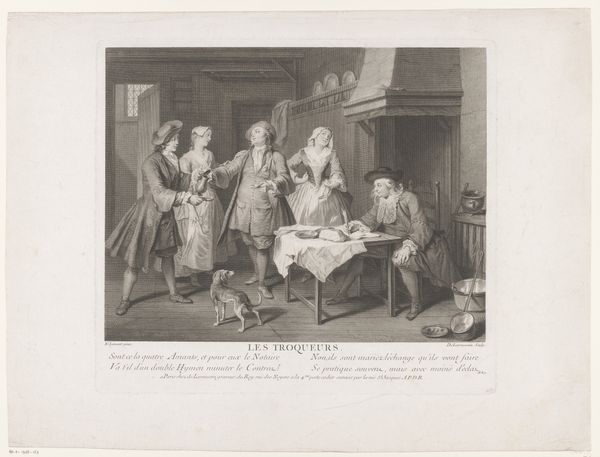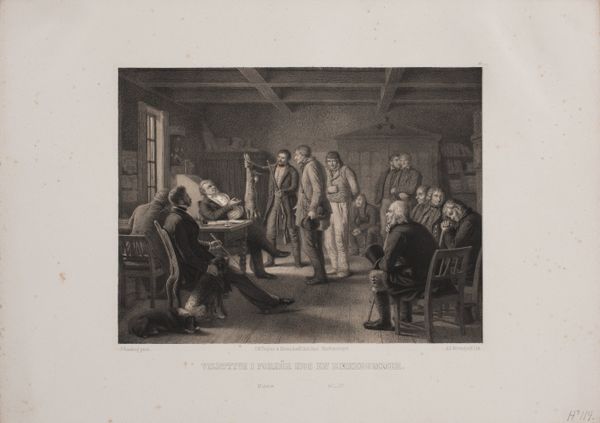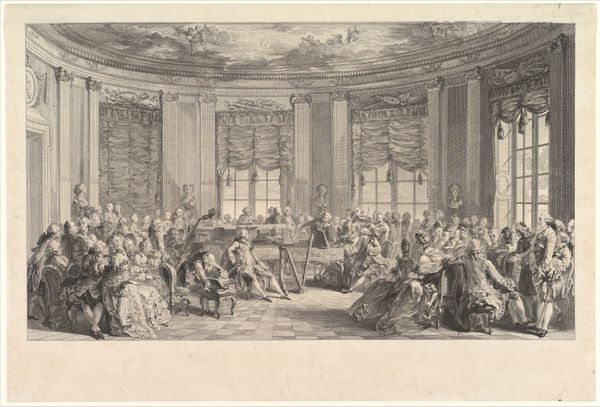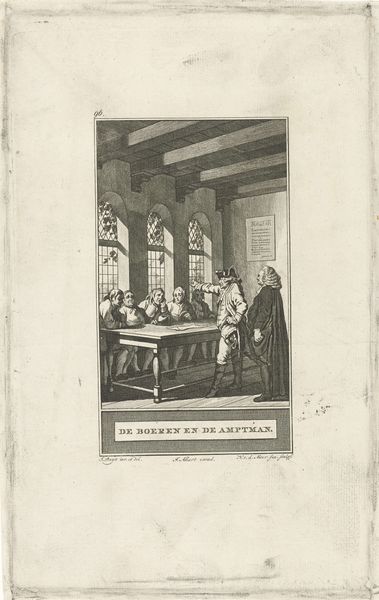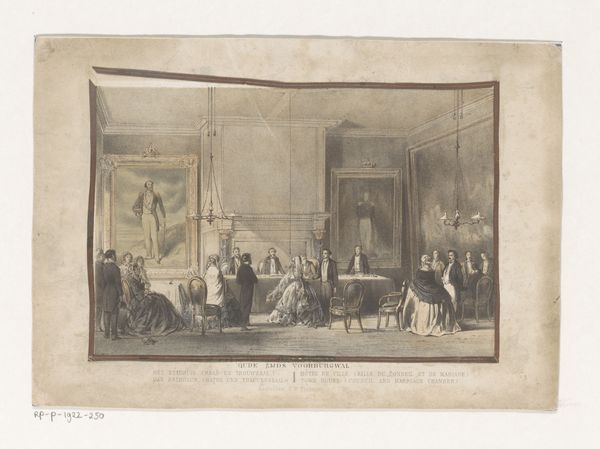
Dimensions: height 295 mm, width 400 mm
Copyright: Rijks Museum: Open Domain
Curator: This print from 1772 by Simon Fokke depicts Willem V taking his seat as director of the Dutch East India Company in 1768. The artwork employs detailed engraving techniques to portray a solemn historical moment. Editor: The mood strikes me as intensely formal. The arrangement of figures around the table feels quite staged, lacking any sense of spontaneity or dynamism. All those pale powdered wigs. It seems so performative. Curator: Group portraits of this era often served specific symbolic purposes. Notice the interior setting – its design suggests power, wealth, and authority, echoing the symbols of Dutch imperial success. Editor: Imperial success built on the backs of countless exploited individuals. It's hard to see this gathering without thinking of the human cost behind the trappings of wealth and privilege it conveys. The clean, geometrical lines give it that kind of brutal order that echoes colonization, don’t you think? Curator: You raise a valid point about the historical implications, but I think that through an iconographic lens, these elements create a strong visual language. Consider the circle, formed by the seated figures – representing unity, completeness. Willem's central position within this circle emphasizes his elevated status. Editor: I would say, this imagery promotes the continuity of power and the justification of an unjust hierarchy through symbolic language, then? Curator: Certainly the Dutch Golden Age context, a highpoint for global trade, informs this scene and underscores a specific sense of national pride. It's also an incredibly detailed piece of art! Just notice how Fokke renders each face distinctively despite using a very precise medium. Editor: Yes, it is precise, and almost overwhelmingly so, which further strengthens my interpretation of controlled power dynamics on display here. The setting and posture act as a sort of performance enhancing propaganda if we place this artwork within a history of exploitation, dominance, and inequality. Curator: Examining artworks like this engraving from different perspectives offers a valuable chance to rethink collective memory. Editor: Indeed, challenging established interpretations is the very least we can do when confronted with legacies as intricate as the Dutch East India Company.
Comments
No comments
Be the first to comment and join the conversation on the ultimate creative platform.
